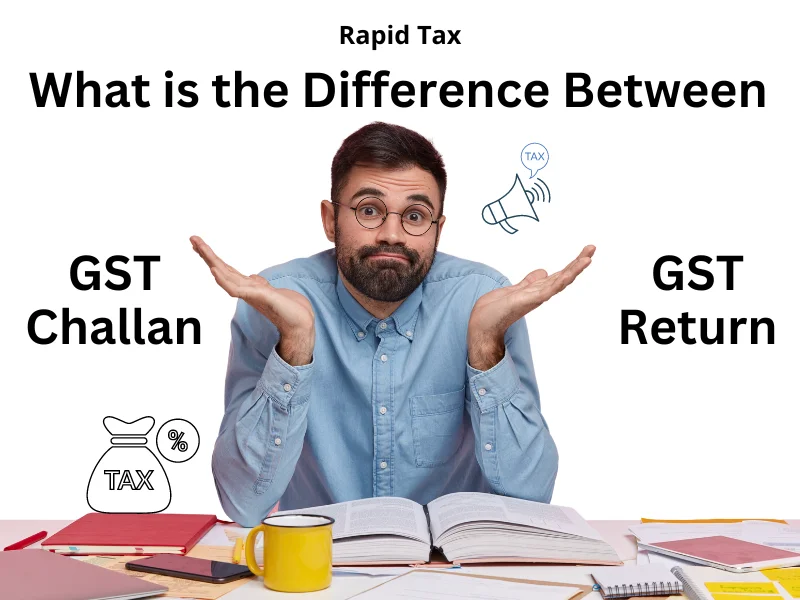What is the Difference Between GST Challan and GST Return?

Goods and Services Tax (GST) is a comprehensive indirect tax levied on the supply of goods and services. Every registered person under GST has to comply with various compliance requirements, including filing of GST returns and payment of taxes. In this blog, we will discuss the difference between GST Challan and GST Return.
GST Challan is a document that is used to deposit the tax amount with the government. It contains details such as the name of the taxpayer, GSTIN, tax period, tax liability, interest, penalty, and any other dues payable under the GST Act. The GST Challan is generated electronically, and the taxpayer can make the payment online through various modes of payment.
On the other hand, GST Return is a document that contains the details of the taxpayer's inward and outward supplies of goods and services. It also includes the tax liability, input tax credit, and other details required for the computation of GST payable for a specific period. GST Returns are filed online on the GST portal.
In simple terms, GST Challan is used for making the payment of taxes, while GST Return is used for filing the details of the transactions made by the taxpayer during a specific period. The Challan is used to pay the tax liability, whereas the Return is used to compute the tax liability.
It is important to note that the GST Challan and GST Return are interconnected, and one cannot be filed without the other. The payment made through the Challan is reflected in the Return, and the details provided in the Return are used for the computation of the tax liability.
In conclusion, GST Challan and GST Return are both essential compliance requirements for any registered person under GST. While the Challan is used for making the payment of taxes, the Return is used for filing the details of the transactions made by the taxpayer. By complying with these requirements, the taxpayers can avoid penalties and interest and ensure timely and accurate payment of taxes.
Get Started!
Recent Posts
What is Difference Between GST Return and ITR?Who is exempt from Filing GSTR 3B?
What is difference between GSTR1 and 3B?
What is the turnover Limit for GSTR 3B?
Can a Salaried Person Apply for GST?
What If Turnover is Less Than 1.5 Crore in GST?
Is TCS deducted including GST?
Is TDS Deducted Including GST?
What is no Minimum Turnover for GST?
Is GST Required Below 40 Lakhs?